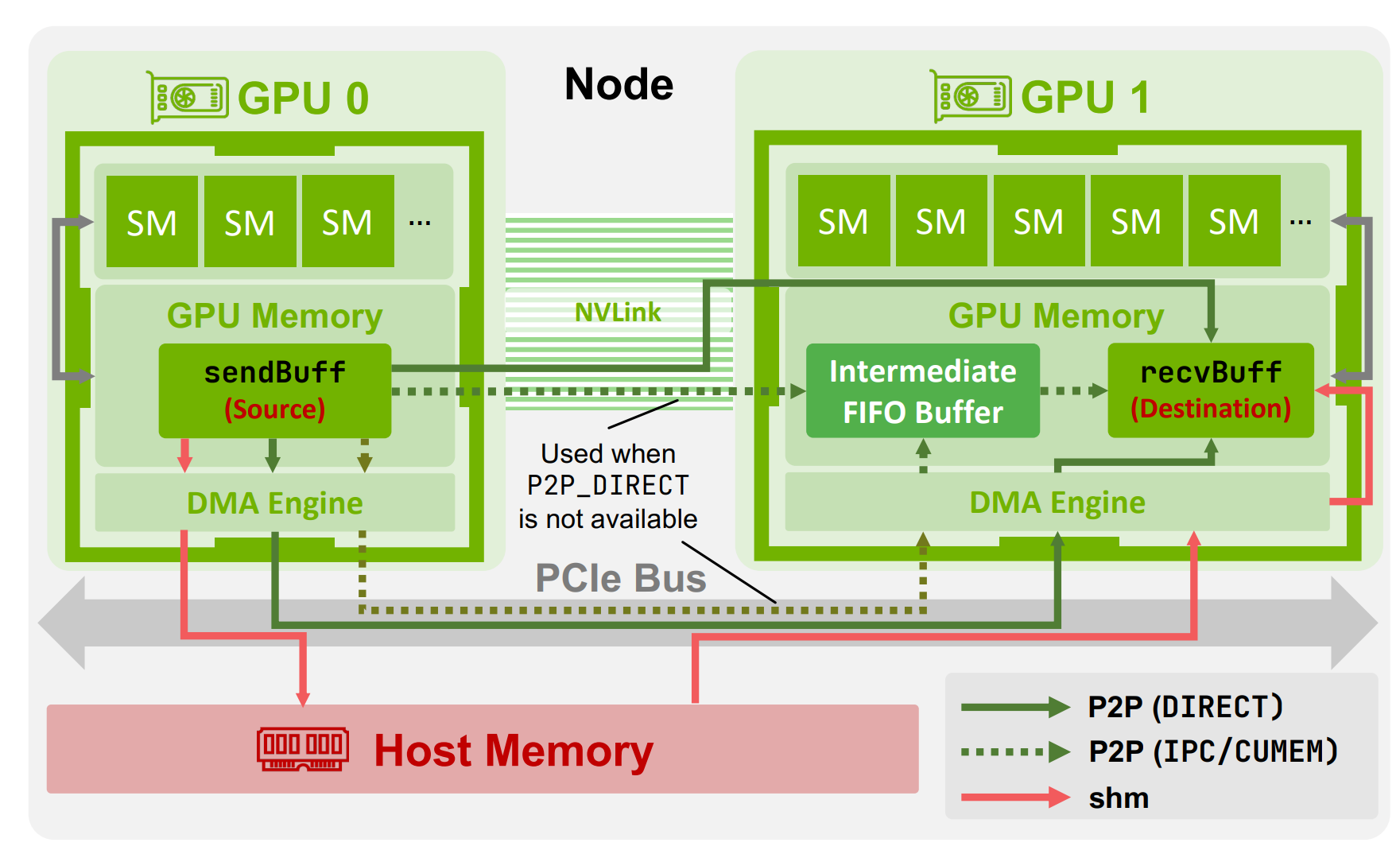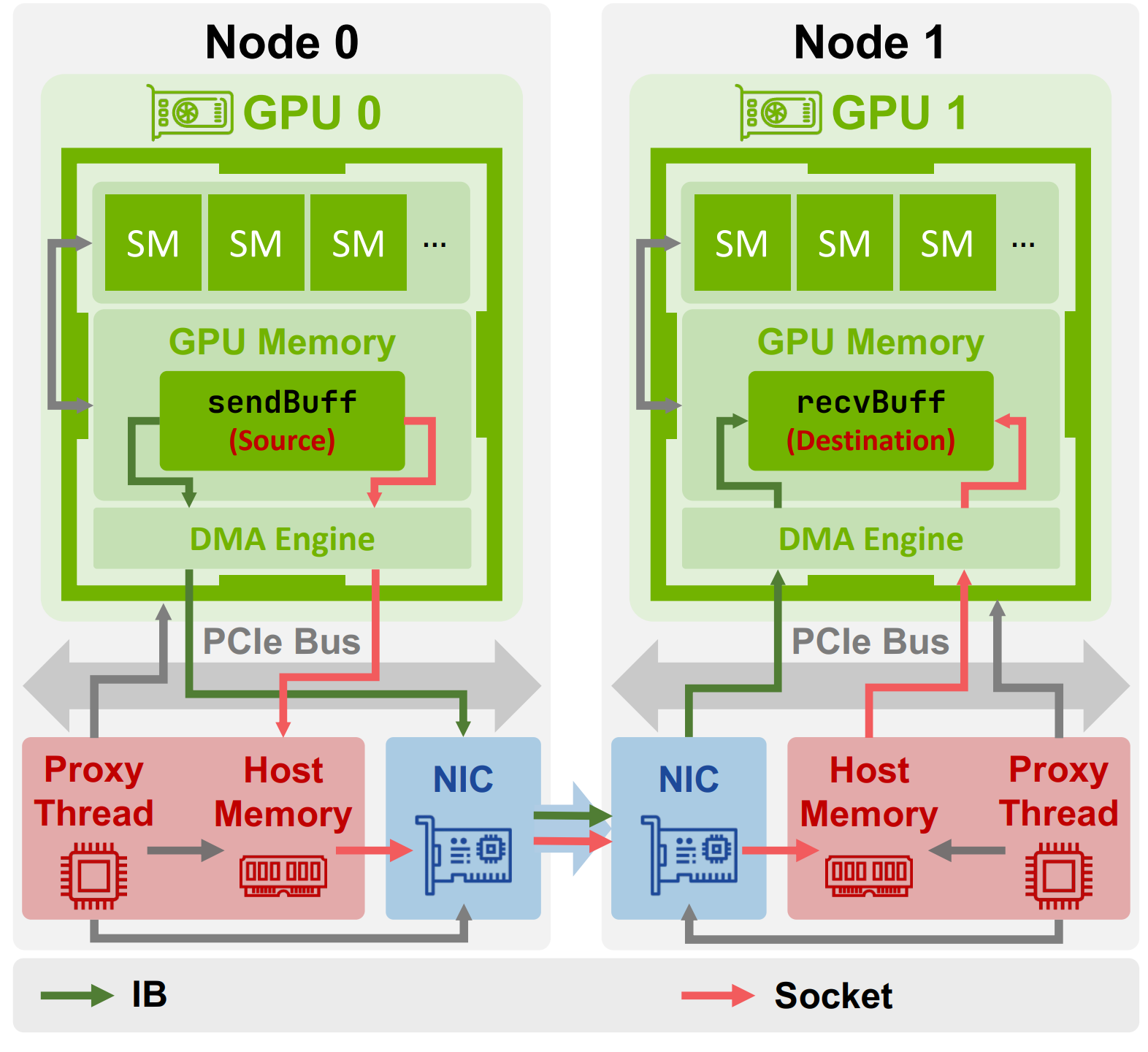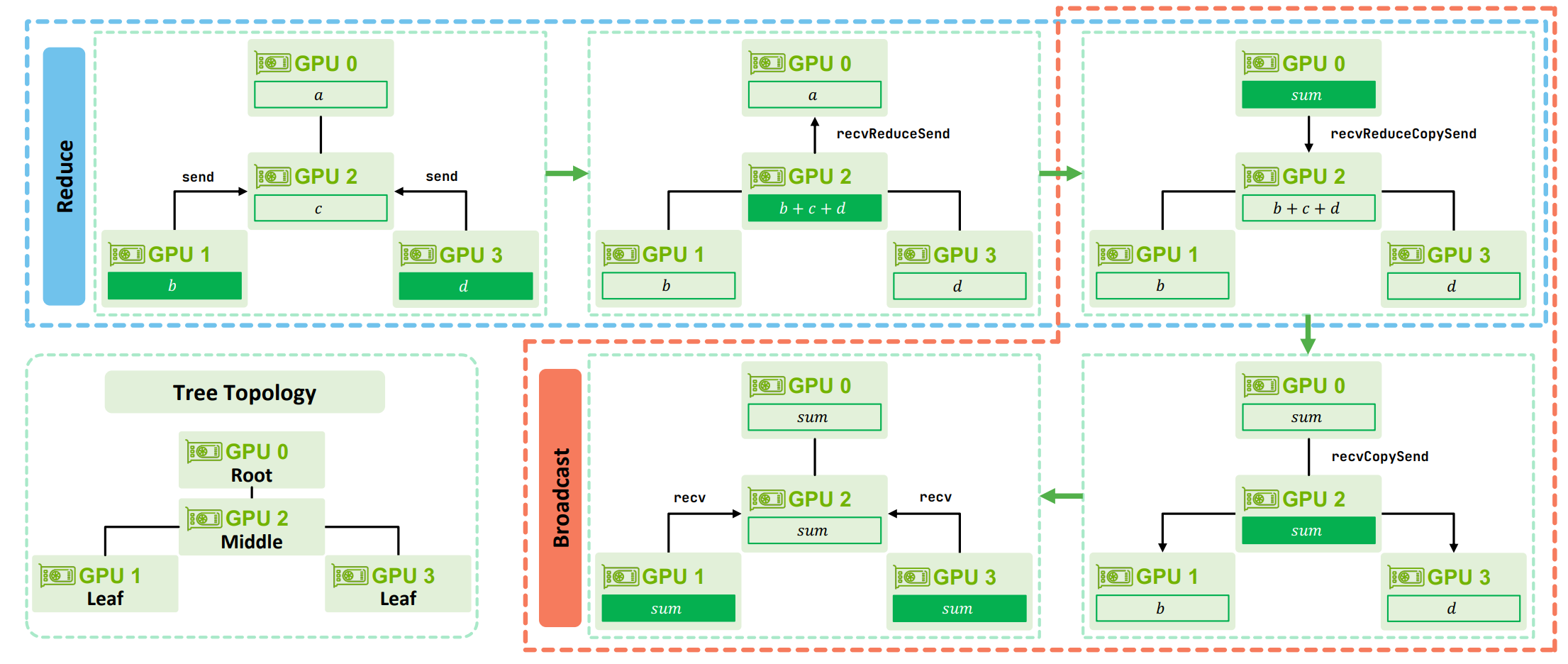Summary: Demystifying NCCL: An In-depth Analysis of GPU Communication Protocols and Algorithms
Materials
1. What is the paper about?
Introduces NCCL: its communication protocols (Simple, LL, LL128), intra-/inter-node data paths and transports (P2P, SHM, etc.), and collective algorithms (ring, tree).
How NCCL achieves throughput via channels → slots → chunks and how these pipelines map onto CUDA (grid/block/warp).
Using these insights to build ATLAHS, an application-trace–driven simulator that reproduces NCCL behavior for large-scale AI training.
2. What is new about this specific paper, compared to prior work?
Introduces fine-grained execution including device primitives (recvReduceSend, recvCopySend, …), synchronization (fences vs. flags), per-protocol buffer sizes, and per-hop latency/bandwidth trade-offs.
Clarifies transport decisions (P2P_DIRECT vs IPC/FIFO, SHM fallbacks, GPUDirect RDMA conditions, etc).
Provides a nice overview for intra-node data transfer

- And for inter-node data transfer

- Illustrates Tree All-reduce using good example (Note: for ring all reduce, you can take a further reading at my previous blog):

3. What experiments were run to support the arguments in this paper?
Compare Simple, LL, LL128 protocols under Ring and Tree algorithms, both inter-node and intra-node. Sweep message sizes (from ≤64 KiB to GB scale) and report medians/violin plots.
Findings: inter-node—LL/LL128 win for small messages, but Simple dominates at large sizes; intra-node—LL128 is consistently strong (near Simple for large, near LL for small). Ring favors large messages; Tree favors small.
4. What are the shortcomings/limitations of this paper?
CollNet/NVLS (and newer PAT) are acknowledged but not analyzed, the main analysis centers on Ring/Tree.
Experiments focus on GH200 (Hopper); portability of quantitative to other topologies may vary.
Emphasis on collective micro-benchmarks (AllReduce in the main text); limited E2E evaluations are reported.
5. What is a reasonable next step to build upon this paper?
Extend the analysis to NVLS/CollNet/SHARP and PAT, including their protocol pairings and hardware constraints.
Broaden validation across more fabrics and topologies (PCIe Gen5, NDR/HDR IB, RoCE), and larger scales.
Cover richer patterns (e.g., all-to-all/MoE, mixture of collectives) and integrate with real E2E performance studies.
Appendix
PCIe Gen5: The 5th-gen Peripheral Component Interconnect Express, offering 32 GT/s per lane to attach GPUs/NICs/CPUs with far higher host-device bandwidth than Gen4.
HDR/NDR InfiniBand: High-speed InfiniBand generations (HDR≈200 Gb/s, NDR≈400 Gb/s per link) providing low-latency RDMA networking.
RoCE: RDMA over Converged Ethernet: RDMA semantics carried over Ethernet (typically RoCEv2/UDP/IP).
NIC: Network Interface Card; the adapter that executes RDMA/verbs operations and moves data over the network.
Grace Hopper (GH200): NVIDIA CPU+GPU “superchip” pairing Grace CPU with Hopper GPU via high-bandwidth NVLink-C2C.
GPUDirect P2P: Intra-node direct GPU-to-GPU memory access over NVLink/PCIe without staging in host memory.
GPUDirect RDMA (GDR/GDRDMA): Allows an RDMA-capable NIC to DMA directly to/from GPU memory, bypassing host memory.
SHM: NCCL’s shared-host-memory path that stages data in DRAM when P2P is unavailable or sub-optimal.
QP (Queue Pair): A send/receive queue pair used by RDMA
NVLS (NVLink SHARP): NVSwitch-based in-network reduction inside a node, optionally combined with CollNet across nodes.
CollNet: NCCL algorithms that leverage in-network compute (e.g., SHARP) to offload parts of collectives to switches.
PAT (Parallel Aggregated Trees): A newer NCCL algorithm family that builds multiple trees to boost parallelism.
Channel: A per-operation parallel lane mapped 1:1 to a CUDA block to split work across SMs.
Slot (NCCL_STEPS): Fixed segments inside a channel buffer that advance in a circular pipeline to overlap compute and transfer.
Chunk: The per-step data unit processed in one elementary step and placed into a slot.
RCCL / oneCCL / Gloo: Collective communication libraries from AMD, Intel, and Meta respectively; alternatives to NCCL.